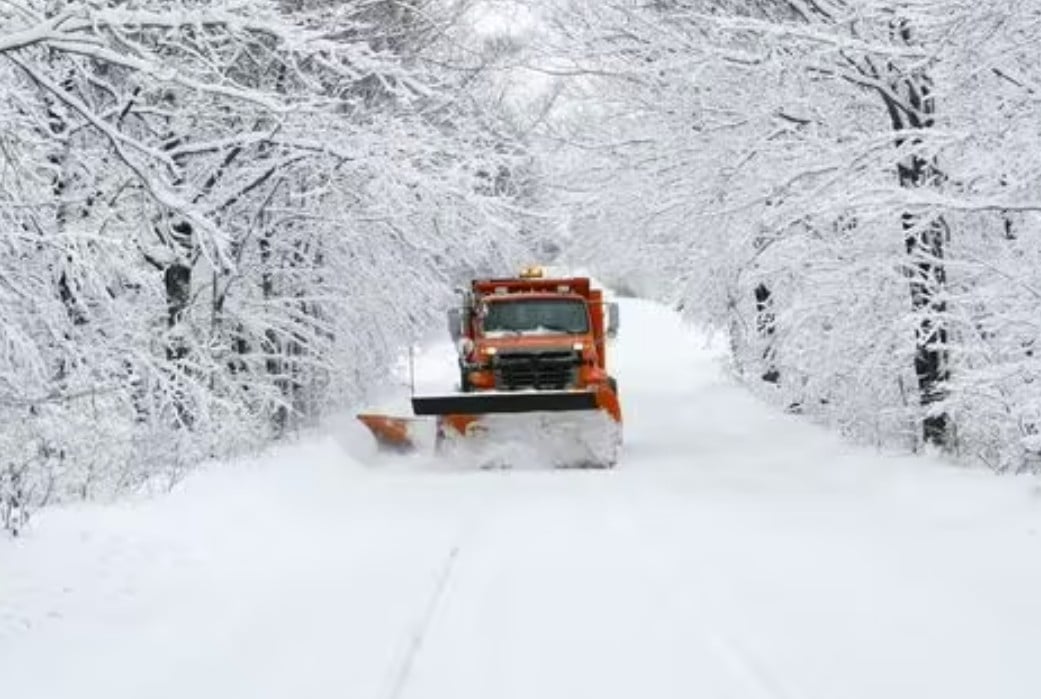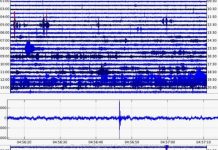
Not every loud boom, skyquake, or house-rattling rumble comes from explosions or aircraft. In some cases, the culprit is the atmosphere itself: fast-deepening storms, collapsing ice, calving glaciers, or massive snow slides. Below is a curated list of five natural weather-related booming phenomena — each with videos and further reading.
Quick overview: 5 booming weather phenomena
- Thundersnow (winter thunderstorms with lightning and snow)
- Weather bombs (explosive cyclogenesis over ocean currents)
- Ice quakes / frost quakes (cryoseism caused by extreme cold)
- Glacier calving (towering ice cliffs collapsing into the sea)
- Avalanches (roaring snow slides in steep mountain terrain)
1. Thundersnow
One of the oddest and rarest winter weather phenomena is thundersnow. It forms when a pocket of warmer, moist air near the ground rises rapidly and collides with much colder air above — the same process that powers summer thunderstorms, but with snow instead of rain. The result: lightning, thunder, and heavy snow falling at the same time.
Because snow absorbs sound, the thunder often feels muffled or distant, but close strikes can still produce a sharp, startling boom that echoes off buildings and hillsides.
2. Weather bomb (explosive cyclogenesis)
A weather bomb, also known as explosive cyclogenesis, occurs when the central pressure of a low-pressure system falls extremely fast within 24 hours. This rapid deepening dramatically strengthens the storm, creating fierce winds, extreme waves, and intense pressure changes.
These bomb cyclones tend to form over the ocean near strong warm currents like the Kuroshio Current in the western Pacific or the Gulf Stream in the North Atlantic.
They are rare on any given coastline but happen globally an estimated 45–65 times per year. The associated winds and pressure jumps can create gusty roars, booming surf, and sudden bangs as waves slam into cliffs and coastlines.
Watch an amazing example from Iceland: apocalyptic weather bomb video.
3. Ice quake (frost quake / cryoseism)
Ice quakes — also called frost quakes or cryoseism — are winter booms triggered by extreme cold. When liquid water trapped in the ground or within rock fractures suddenly freezes and expands, it can crack the surrounding material violently, sending out seismic waves.
Residents often describe the sound as a gunshot-like crack or a distant explosion, sometimes strong enough to rattle windows and floors. Ice quakes are relatively unknown in much of Europe but are more frequently reported in Canada and the northern United States during intense cold snaps.
Learn more here: Explosive frost quakes reported in Canada and the US.
4. Glacier calving
At the edges of large glaciers, enormous blocks of ice break off and crash into the ocean or nearby lakes — a process called glacier calving. These collapses can involve millions of tons of ice, generating thunderous booms, cracking sounds, and long-lasting rumbles that echo across fjords and valleys.
The famous Ilulissat Glacier in western Greenland has produced some of the largest calving events ever recorded on video, showcasing just how loud ice can be when gravity finally wins.
5. Avalanche
Most people know what a snow avalanche is — a fast-moving mass of snow, ice, and debris sliding down a steep mountain slope. What surprises many is the sound: a deep, humming roar that grows as the avalanche accelerates, sometimes punctuated by cracking or booming noises as cornices break and snow slabs fracture.
The following recording from Lakselvdalen in northern Norway (April 30, 2008) captures that eerie hum. The low-frequency vibration is oddly similar to the booming sand dune sounds reported in deserts around the world.
Are all mystery booms caused by weather?
No. Some unexplained booms are linked to meteors, sonic booms from aircraft, industrial activity, earthquakes, or unknown sources.
But in cold seasons or near glaciers and stormy coastlines, it’s worth considering these natural weather-related suspects before jumping to more exotic explanations.
FAQ: Loud Booming Weather Phenomena
What is thundersnow and why is it so rare?
Thundersnow is a winter thunderstorm that produces lightning and thunder while it’s snowing instead of raining. It requires a very specific combination of instability, moisture, and cold air, which is why it is much rarer than normal summer thunderstorms.
What exactly is a weather bomb?
A weather bomb is a low-pressure system whose central pressure drops extremely fast (typically 24 hPa or more in 24 hours). This rapid deepening supercharges the storm, producing violent winds, huge waves, and occasionally loud, booming surf and wind gusts.
How do ice quakes (frost quakes) make booming sounds?
During extreme cold, liquid water inside soil, rock cracks, or ice layers can suddenly freeze and expand. That rapid expansion builds stress until the ground fractures, releasing energy as a short, sharp seismic event that people hear as a loud crack or boom.
Why are glacier calving events so loud?
When giant blocks of ice break off a glacier and crash into the water, they displace huge volumes of ice and water in a fraction of a second. The fracture and impact generate intense acoustic waves that echo as thunder-like booms and long, low rumbles.
Are these booming weather phenomena dangerous?
The sounds themselves are not usually dangerous, but the processes behind them can be.
Avalanches, glacier calving, ice quakes, and weather bombs can all damage infrastructure, reshape landscapes, or threaten lives, especially in coastal, polar, or mountainous regions. If you hear repeated booms in such environments, staying alert and informed is wise.
Do you know other winter-related booming phenomena? Share your report or video link in the comments or contact us and help expand this weather-boom archive.
💌 Love strange weather phenomena and mysterious booms? support Strange Sounds: PayPal · Donorbox
📰 Subcribe to the Strange Sounds Newsletter! You will love it!












